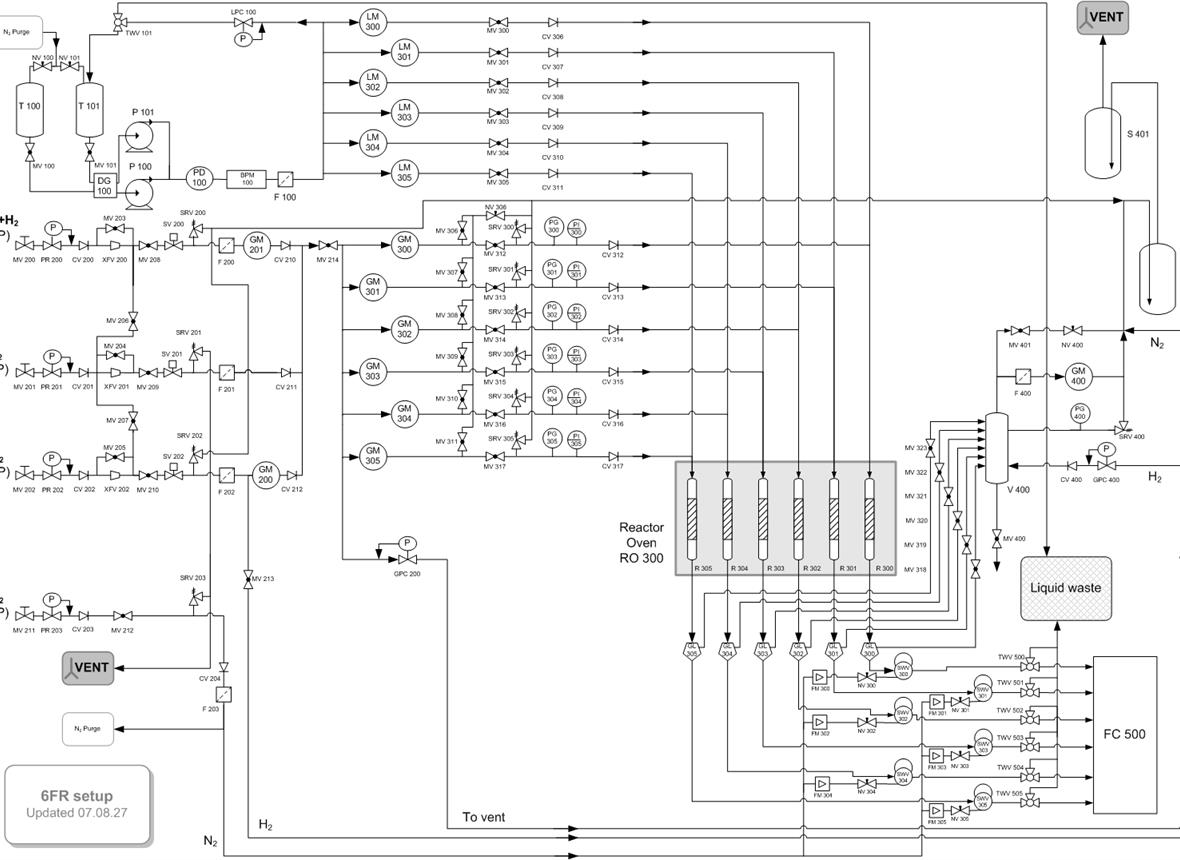
Asphaltenes in crude oil are high–molecular–weight, polyaromatic, heteroatom-containing compounds that cause severe operational issues in petroleum production and refining, including fouling, catalyst deactivation, and yield losses. Traditional solvent de-asphalting (SDA) processes remove asphaltenes effectively but require large solvent circulation, high energy for solvent recovery, and produce low-value pitch byproducts.
This project aims to develop a non-solvent, catalyst-based de-asphalting process using acid catalysts and other solid acids, thereby avoiding solvent waste, reducing operating costs, and enabling higher-value product streams. The approach integrates catalyst testing, process optimization, some mechanistic understanding, and preliminary scale-up design.
Our work covers the fundamentals of catalyst selection and mechanistic pathways for asphaltene precipitation, through laboratory process optimization, advanced analytics for product characterization, and process modeling for continuous operation and scale-up
